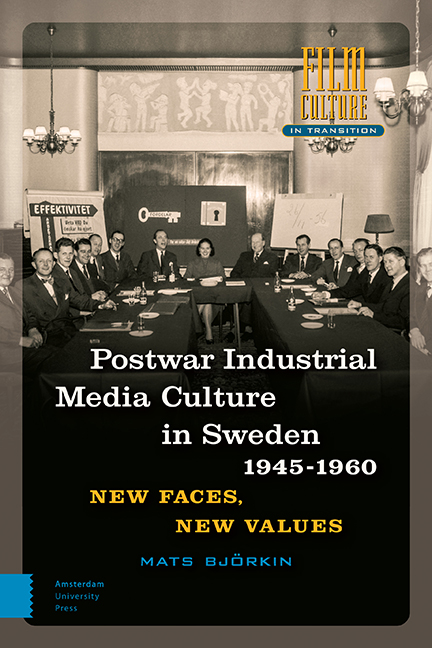Book contents
Summary
Abstract
In the conclusion, The New Face's creative treatment of the concepts of beauty, surgeons, landscape, and, most of all, values are put into the context of an industrial public sphere with its own mix of efficiency and rationalization, human behaviour and networks, and multifaceted understandings of value and contact.
Keywords: development triad, contact, communication, flannelgraphs
The Swedish public service broadcast media, lacking commercial alternatives, resulted in a consumer-oriented industry that had to exploit radio and television topics and celebrities indirectly while continuing to press advertising, as well as focus on establishing local contact via film screenings, exhibitions, etc. The Swedish social democratic, third-way vision of state, commercial, and cooperative interests acting in harmony (which I summarize using Michael Hård's concept of the “development triad”) is best expressed in the sober consumption discourse found in and around the housewives’ films.
Small- and mid-sized enterprises had interests that were different from those of export-oriented large industries. Larger companies had more resources, but also broader promotional interests. They choose traditional industrial promotional films screened in cinemas, but also within the companies themselves, as well as at industrial film festivals. Smaller companies focused more on internal communication and interactivity because they needed media for training, recruitment, and corporate communication. The Swedish Employers’ Confederation (Svenska Arbetsgivareföreningen, SAF) took initiatives to promote uses of media, particularly through a collaboration with unions in establishing the human resources consulting agency the PA Council, which supported business and industry to develop their own rhetoric and vocabulary, exemplified by applications of the term “contact.” The 1948 regulations of work councils (företagsnämnder) boosted the demand for economic information, thereby creating an opening for SAF's policy work on increasing the public interest and acceptance of private enterprises and private ownership (in line with international trends pushed forward, for example, by the Marshall Plan).
Industry representatives, often management and communication consultants, developed theories of corporate media and pushed them though manuals and instructions, which also functioned as promotional material for the consultants. Key debates on the media specificities of film, slides, sound slides, and flannelgraphs gave theoretical backgrounds to initiatives to increase human involvement in organizational processes.
- Type
- Chapter
- Information
- Postwar Industrial Media Culture in Sweden, 1945–1960New Faces, New Values, pp. 183 - 186Publisher: Amsterdam University PressPrint publication year: 2021



